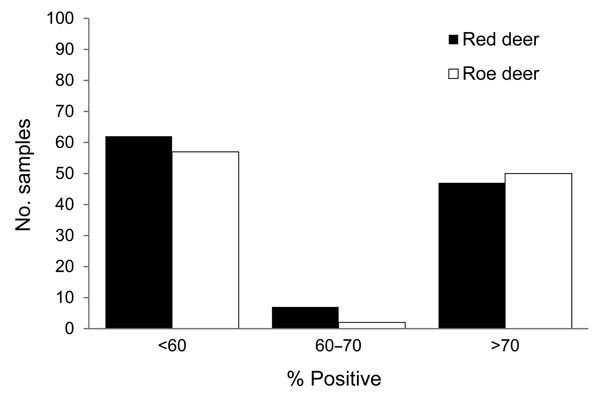Volume 18, Number 12—December 2012
Dispatch
Epizootic Spread of Schmallenberg Virus among Wild Cervids, Belgium, Fall 2011
Figure 2

Figure 2. . Frequency distribution of the results yielded by indirect ELISA for detecting IgG targeting recombinant nucleoprotein of emerging Schmallenberg virus in serum samples collected from 116 red deer and 109 roe deer in southeast Belgium during the fall of 2011. Results are expressed as percentages of the reference signal yielded by the positive control serum. Serologic status is defined as negative (<60%), doubtful (60%–70%), or positive (>70%).
1These authors contributed equally to this article.
Page created: November 21, 2012
Page updated: November 21, 2012
Page reviewed: November 21, 2012
The conclusions, findings, and opinions expressed by authors contributing to this journal do not necessarily reflect the official position of the U.S. Department of Health and Human Services, the Public Health Service, the Centers for Disease Control and Prevention, or the authors' affiliated institutions. Use of trade names is for identification only and does not imply endorsement by any of the groups named above.